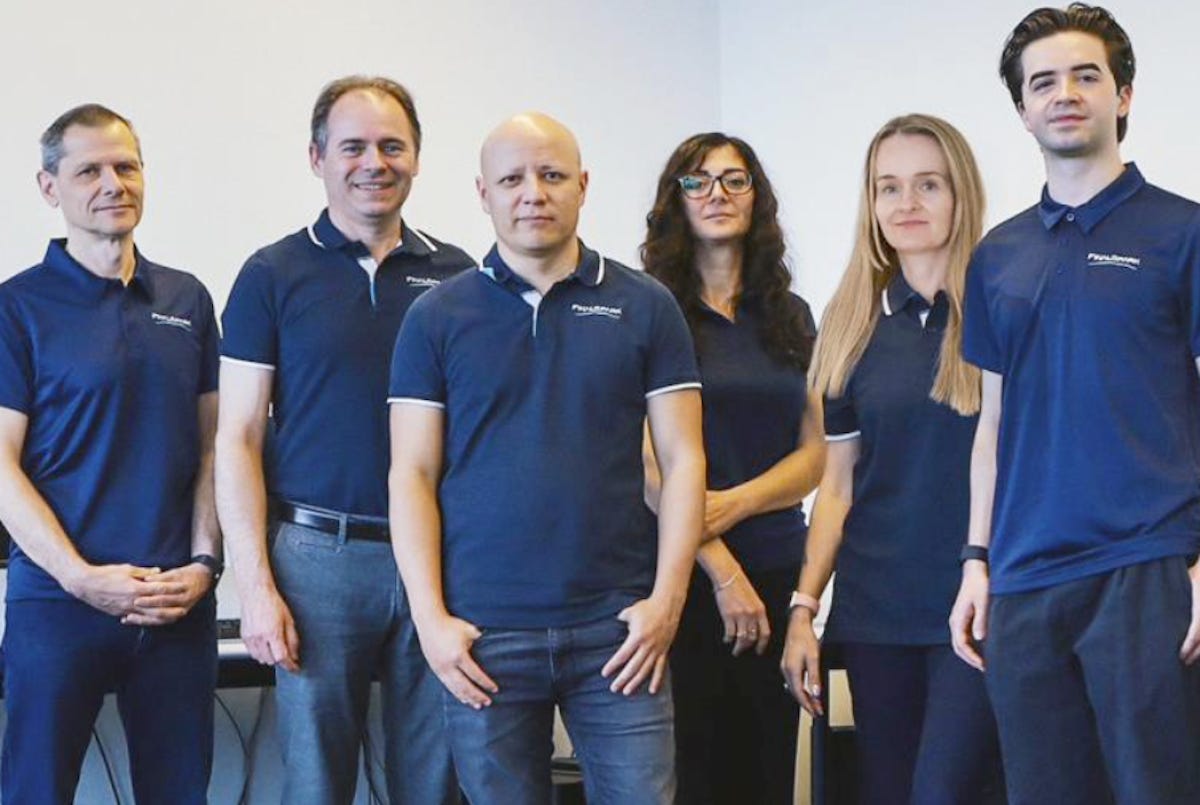FinalSpark explores living neurons as low-energy biocomputers for AI
A Swiss team pioneers brain-on-a-chip systems to tackle mounting energy demands in artificial intelligence and computing

The exponential growth of artificial intelligence has driven an equally steep increase in energy consumption. Training a single large model can emit as much CO2 as several cars over their lifetime, and traditional chips are straining under these demands. FinalSpark, a Swiss startup, is pursuing a unique approach: utilizing living neurons as computational units.
Neurons are millions of times more energy efficient than digital processors, offering a radical alternative to silicon. FinalSpark is building biocomputers from human neurons, aiming to deliver low‑energy computation that could one day complement or replace conventional chips. Although still in its early stages, the project has already attracted global scientific collaborators and paying clients.
“We use living neurons, the same as we have in our heads. We put them in the lab and try to program them so they can become processors in the computer,” Dr. Ewelina Kurtys, scientist and business development lead at FinalSpark, told TechJournal.uk in an interview.
“They are one million times more energy efficient than digital hardware,” she noted. “For the end user, it will not make a difference. It will just be cheaper to use because it will use less energy.”
Kurtys acknowledged that practical hurdles remain. “Nobody really knows how neurons encode information. We see spikes, we measure signals, but translating them into knowledge is still very difficult.”
“Neurons don’t produce heat like silicon chips, but they must be maintained in exact conditions if they are to survive,” she said.
Despite the uncertainties, FinalSpark continues to press forward with confidence. The founders have already secured three patents and tested roughly 10 million neurons. The company has also gathered 20 terabytes of experimental data, a significant body of evidence for such a small research group.
Building a thinking machine
Founded in 2014 in Vevey by Dr. Martin Kutter and Dr. Fred Jordan, FinalSpark originated from a simple yet radical idea: a “thinking machine” built not from silicon, but from biology.
After early efforts with conventional AI algorithms, the founders pivoted in 2018 toward biocomputing, inspired by the human neuron as nature’s most sophisticated processor.
While current experiments are limited to storing a single bit of information, the company already operates a remote lab that paying clients and academics can access worldwide. In 2023, FinalSpark’s laboratory housed thousands of neurons connected to electrodes for computation, marking an important milestone in its research achievements.
At a presentation in London in June 2025, the company outlined its roadmap. Within ten years, FinalSpark aims to build bio-servers accessible via the cloud, providing computational power for generative AI applications. Kurtys sees such platforms as both cost-effective and energy-efficient.
The company is now seeking CHF 50 million (US$62.7 million) to fund its next stage: achieving in vitro learning.
Competitors emerge
FinalSpark is not alone in its quest. Biocomputing has recently seen other ventures gain visibility, reflecting the growing recognition of neurons as a potential substrate for computing.
One notable competitor is Cortical Labs, a biotech firm based in Melbourne, Australia. In March 2025, Cortical Labs launched the CL1, a biological computing system that integrates human brain cells with silicon hardware to create dynamic neural networks.
Branded as Synthetic Biological Intelligence (SBI), the system is designed to offer an alternative to conventional AI by leveraging the adaptability and energy efficiency of biological neurons.
Unlike traditional processors, which rely on fixed logic gates, SBI reportedly enables a more flexible and learning-capable computing framework. The emergence of competitors such as Cortical Labs underscores the momentum building around this new computing paradigm.
Despite competition, Kurtys insists the field is large enough for multiple players.
Partnerships and ethics
During the Covid pandemic, FinalSpark developed a system that allows researchers to run neuro-experiments remotely. The interest has been global: dozens of universities applied for access, but only 10 were selected to ensure sufficient availability. They are:
University Côte d’Azur
University of Michigan
Free University of Berlin
University of Exeter
Lancaster University Leipzig
University of York
Oxford Brookes University
University of Bath
University of Bristol
University of Tokyo
Researchers can stimulate and record neuron activity remotely, exploring their own ideas on this shared neuroplatform.
The company strikes a balance between academic openness and commercial rigor. While universities gain free access without retaining intellectual property, paying clients can develop proprietary applications. This dual model allows FinalSpark to foster innovation while protecting its core business strategy.
The ethical dimension is never far from the conversation.
“Consciousness is not really a scientific question—it’s more philosophical,” Kurtys said, noting that FinalSpark actively engages philosophers to explore the implications of biocomputing.
The company also anticipates future regulation, emphasizing its commitment to building trust and societal acceptance.
“We want the work we do to be accepted by society,” she added. “It’s crucial for us to be ready if new rules are required.”
Key facts and future outlook
With only six core members supported by three advisors, FinalSpark operates on a lean structure. Since its founding, about CHF 1 million has been invested in research and infrastructure, reflecting both its modest scale and its efficiency in pushing boundaries.
The company is also considering new laboratories beyond Switzerland, contingent on securing further investment.
FinalSpark’s mission resonates with a broader movement in biotechnology. As Jordan and Kutter point out, the trajectory of engineering has increasingly shifted from artificial to biological systems—whether in medicine, energy, or data storage. Biocomputing, they argue, could be the next logical step.
In the longer term, Kurtys envisions bio-servers that run artificial neural networks on living neurons, delivering AI services at a fraction of today’s energy costs.
While questions of scale, control, and societal impact remain, FinalSpark’s experiments suggest a future where biology and computing converge in profound ways. For now, the company is navigating uncharted scientific terrain—seeking to prove that living neurons can indeed power the next wave of artificial intelligence.


